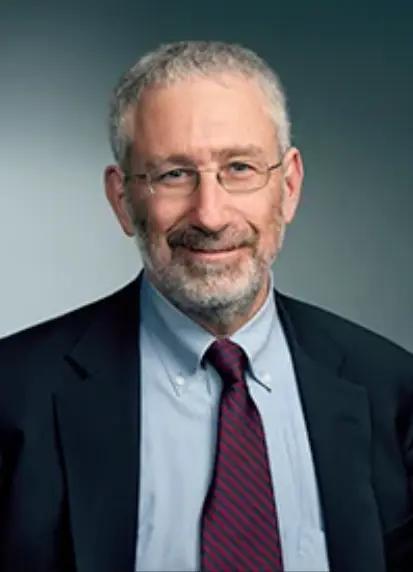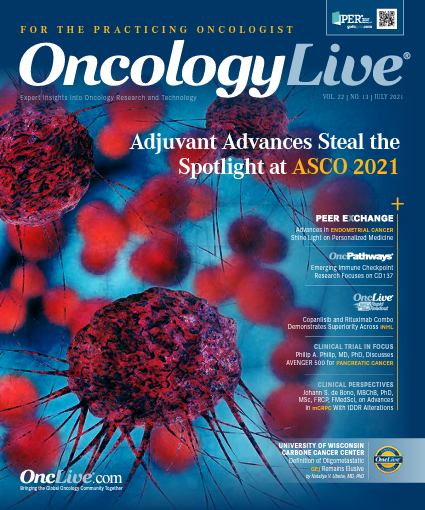Scientific Communication Requires a Course Correction
The overall picture related to COVID-19 in the Unites States is encouraging, and we might suspect that the American public would be relatively united with favorable views of efforts of public health officials and organizations at the national, state, and local levels to successfully control this terrible event and return us to our prepandemic state.
Maurie Markman, MD

We are entering a most interesting time in our nation’s history. There is legitimate optimism that the COVID-19 pandemic, which has resulted in almost 600,000 deaths in the United States, is finally coming under control, with most normal daily activities already returning to prepandemic states. The economy is rapidly improving, as unemployment levels fall, and in certain industries, there even appears to be a shortage of workers as businesses ready to substantially expand services and operations.
Schools that have offered only virtual learning since early 2020 are planning to return to in-person classes beginning in the fall. Some are even considering offering enhanced in-person activities during the normally quiet summer months to permit students to catch up on relevant experiences that were severely curtailed during the pandemic. Travel-related activities, including family vacations, deferred over the past year are rapidly accelerating, coinciding nicely with the warm summer months.
Finally, we must acknowledge the truly spectacular success associated with the FDA-approved COVID-19 vaccines. This includes the remarkably short timeline from initial laboratory evaluation to clinical trial implementation, rigorous scientific review, widespread real-world deployment of the products, and, most importantly, the highly favorable and now well-documented population-based effect of vaccination in the noninvestigative setting. Adding to these superlatives is the emergence of the evidence regarding COVID-19 variants, the widespread emergence of which appears to be successfully prevented by the available vaccines, even if not quite as effectively as the initial virus against which the vaccine products were created.
Based on this information, the overall picture related to COVID-19 in the Unites States is encouraging, and we might suspect that the American public would be relatively united with favorable views of efforts of public health officials and organizations at the national, state, and local levels to successfully control this terrible event and return us to our prepandemic state.
Unfortunately, such a conclusion would be far from accurate. Results of a recent poll conducted by the Robert Wood Johnson Foundation and the Harvard T.H. Chan School of Public Health from February 11 to March 15, 2021, found that 52% of respondents (N = 1305) had “a great deal” or “quite a lot” of trust in the CDC, the national organization responsible for coordinating efforts to prevent and successfully control such infectious disasters.1 At the state and local levels, public health agencies had an even lower percentage of individuals (41%) who reported having high public trust; the National Institutes of Health and the FDA scored even lower, with 37% of respondents expressing “a great deal” or “quite a lot” of trust in both government organizations.
Further, and perhaps even more disturbing, when asked their opinion regarding the overall effectiveness of the existing public health system across the country in protecting us from health threats and preventing illness, 34% of those participating in the poll provided a positive response, a decrease from 42% when the same question was posed i n 2009.1 Of note, in the same poll, high public trust in nurses (71%), in health care workers whom respondents knew (70%), and doctors (67%) far exceeded that of public health agencies.
We can only speculate the reasons for this rather stunning gap between the confidence expressed in the public health community and the overall objective success in vaccination strategies, improvement in the general economy, and return to relatively normal activities from the devastation of this pandemic. It is likely that communication related to complex, poorly understood, rapidly evolving, and often contradictory information frequently leads to more confusion rather than enlightenment. Further, differences in opinions within the scientific and public health communities that are then widely disseminated online and in the traditional media may be another contributing factor.
Consider a few examples of events over the past few months that emphasize this point. The CDC is responsible for providing recommendations to governmental health agencies at the federal, state, regional, and local levels for strategies to control and prevent serious infectious events. However, at times it has appeared to many that the recommendations were potentially at least partly politically motivated or at the very least poorly considered. The recent rather sudden change in recommendations for wearing masks for the fully vaccinated population falls into this category.2,3
Although the CDC has regularly proclaimed that its recommendations are based on the science, this particular statement appears to have been poorly communicated or at least inadequately vetted within the public health community for how it would affect existing policies and how the recommendations might be effectively implemented.3 One prominent academic in this area was quoted as saying, “CDC’s been great in ’21, but on this one they declared victory too early.”2 Clearly, this and similar statements do not provide overwhelming support for the CDC, nor confidence in how the organization communicates with academic peers and the public.
As a second example, at the time of writing this commentary, the question of the origin of the virus that led to the COVID-19 pandemic remains a matter of great controversy. This topic, which involves complex national and international considerations, has led to wide-spread disagreements within the highest levels of the academic viral, epidemiology, and public health communities.4 The concern here are the very public disagreements, which include claims of potentially serious professional conflict-of-interest accusations among scientists and the organizations they represent. These cannot be viewed positively in the eyes of the American public, who are routinely asked to trust the observations and opinions of these individuals and groups.
The intent of this commentary has been to highlight both the complexity and importance of effective communication regarding highly relevant public health issues. Of course, this concern relates to communication regarding cancer topics, such as discussions around the critical issues of smoking cessation and weight control, as well as messages encouraging vaccination strategies known to reduce the risk of cancer. If the message gets lost because of the inability to effectively communicate, or trust in the messenger is diminished, our society as a whole suffers the unfortunate consequences.
References
- Poll: public supports substantial increase in spending on U.S. public health programs, but has serious concerns about how the system functions now. Robert Wood Johnson Foundation. May 13, 2021. Accessed June 15, 2021. rwjf.ws/3zOIpB8
- Having taken criticism for being overcautious, the CDC tries the opposite. Economist. May 22, 2021. Accessed June 15, 2021. econ.st/3vOo1gt
- CDC loosens mask guidance, drawing praise and flak. News at a Glance. Science. 2021;372(6544):770-772. doi:10.1126/science.372.6544.770
- Bloom JD, Chan YA, Baric RS, et al. Investigate the origins of COVID-19. Science. 2021;372(6543):694. doi:10.1126/science.abj0016




